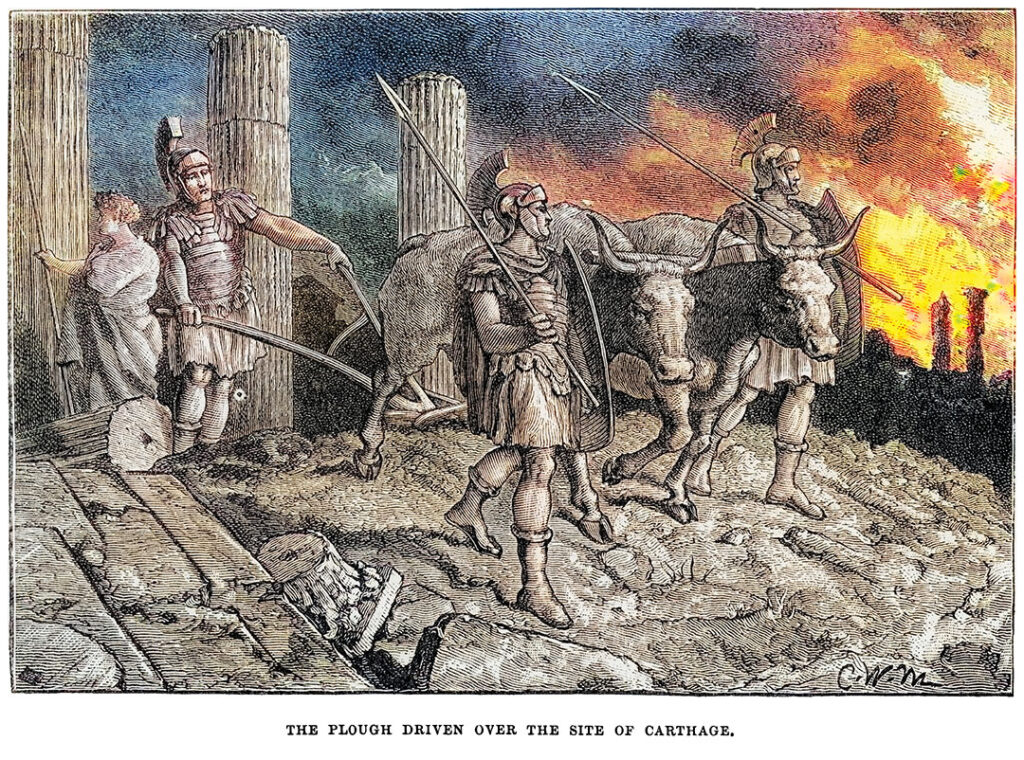It was almost inevitable that Phoenician settlers would establish a trade center more than 2,200 years ago in what is now the Tunisian port city of Tunis.
The Phoenicians named it Carthage, which means “new town.” It juts into the central part of the Mediterranean Sea, and its sailing access to ports along the European and African coasts made it critical to trade routes. It also made Rome and Carthage competitors in a rivalry that lasted for centuries.
The Phoenicians, from what is now Lebanon, chose their maritime colonies carefully, focusing on the quality of their harbors and how well they could be defended from attacks. They discovered that Carthage was an ideal spot, on a triangular peninsula covered with low hills.
The Phoenicians learned to use their renowned seafaring and trading skills to full advantage in their North African post. The city-state grew into a sprawling Mediterranean empire that dominated trade in textiles and precious metals.
But the Phoenicians’ influence was not to last. By the seventh century B.C., Carthage had begun to assert its independence while Phoenicia was dealing with a series of Babylonian sieges. Carthage’s wealth and power grew, built on a combination of maritime trade, agriculture and mineral resources.
By the fourth century B.C., Carthage had expanded its power across the western Mediterranean, becoming the dominant force in the region. The Carthaginian empire included North African coastal regions from Morocco to western Libya, Sardinia and the Balearic Islands, the western half of Sicily, and parts of the Iberian Peninsula.
The Carthaginian empire, also known as the Punic empire, was based on its financial and political influence, not on its military power. Punic magistrates directly controlled some territories, while treaties, alliances or tributary relationships helped Carthage control other regions. As Carthage expanded, its culture incorporated its surrounding influences: Phoenician, African, Greek and, later, Roman.
The empire’s craftsmen were considered some of the best in the world. Europe regarded Punic beds, cushions and mattresses as luxuries, and craftsmen copied Punic furniture throughout Europe.
At its peak, Carthage boasted a population of nearly 500,000 people. Its vast infrastructure included a harbor with a docking capacity of 220 ships.
Carthage’s power and expansion eventually brought it into conflict with the rising Roman Republic. This rivalry led to the Punic Wars, a series of three bloody conflicts that would come to define the era and ultimately decide the fate of the western Mediterranean.
Carthage fought the First Punic War, from 264 to 241 B.C., over control of Sicily. Rome won as a result of its emerging naval power. The Second Punic War, from 218 to 201 B.C., is famous for Hannibal’s crossing of the Alps and his initial overwhelming victories against Rome. But he eventually lost a war of attrition, and Carthage surrendered its overseas territories to Rome.
The Third Punic War marked the destruction of the Carthaginian empire. Rome, led by the forces of Gen. Publius Cornelius Scipio Africanus Aemilianus, won in a three-year campaign that ended in 146 B.C. with the near-total destruction of Carthage.
But the city’s legacy lived on, with Julius Caesar establishing a Roman colony on the ruins of Carthage in 44 B.C. It grew to become one of the most important cities in the Roman Empire.
The rivalry between Carthage and Rome is a major part of African and European history. It shaped the political landscape of the world for centuries. In history, the empire has come to be defined by the three Punic wars, but it always was more accurately defined by its maritime trade, agriculture and exploration, which helped make the region what it is today.

